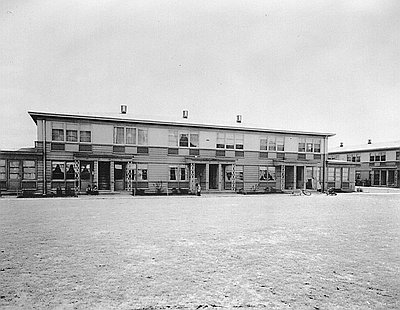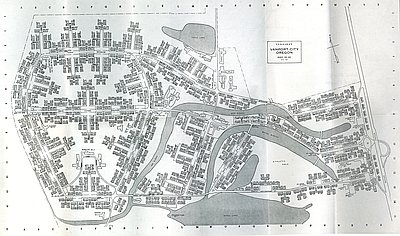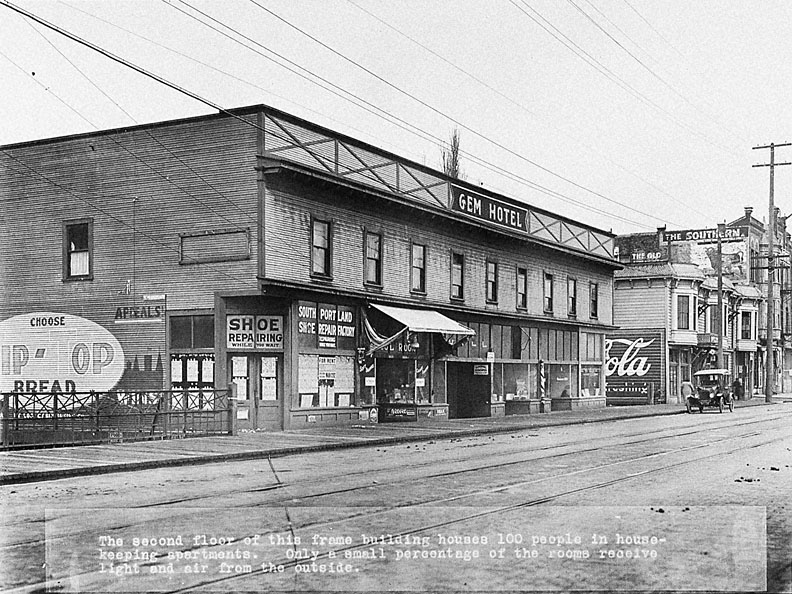- Catalog No. —
- OrHi 52927
- Date —
- 1918
- Era —
- 1881-1920 (Industrialization and Progressive Reform)
- Themes —
- Geography and Places, Race, Ethnicity, and Nationality, Trade, Business, Industry, and the Economy
- Credits —
- Oregon Historical Society
- Regions —
- Portland Metropolitan
- Author —
- Unknown
Gem Hotel, ca. 1918
In 1918, wartime housing shortages forced nearly a hundred people to accept crowded living conditions in the working class Gem Hotel in Portland. The hotel was located above a shoe repair shop and vacant retail spaces at Southwest First and Sheridan.
According to a survey conducted at the time, Reed College Professor Jesse Short found that the hotel had one toilet for every fourteen units, and each one was windowless and ventilated into a windowless hall. Only a few of the rooms received light and air from outside, and all of the residents shared a single filthy, cold water faucet.
Similar conditions in other Portland tenements arose with increased immigration to the Portland area and wartime industries, especially related to shipbuilding, only encouraged further population growth. The problems were so pervasive that federal and local government agencies intervened. In 1918, the federal government threatened to withhold additional shipbuilding contracts if the city failed to address the housing problems. The city government responded by enacting building and housing codes. Some citizens, however, called for the federal government to assume some of the expense of finding or building adequate housing for war workers. They argued that local real estate investors could not shoulder the economic burden of building houses that would be abandoned after the war and asked that the federal government to factor building costs into wartime budgets.
No federal assistance materialized, and after World War I ended on November 11, 1918, the shipbuilding industry collapsed, and the housing problems eased.
Further Reading:
MacColl, E. Kimbark. The Growth of a City. Portland, Oreg., 1979.
Abbott, Carl. Portland: Planning Politics, and Growth in a Twentieth-Century City. Lincoln, Nebr., 1983.
Written by Trudy Flores, Sarah Griffith, © Oregon Historical Society, 2002.
Related Historical Records
-
Vanport Residences, 1947
Built to address Portland’s World War II housing shortage, Vanport was called “The Miracle City.” Over 72,000 new workers arrived in Portland during the war. Industrialist, Henry J. Kaiser, imported so …

-
War Housing and Vanport
When war broke out, Portland was the only city on the West Coast without a public housing authority, yet it faced the most rapid increase in war workers …

